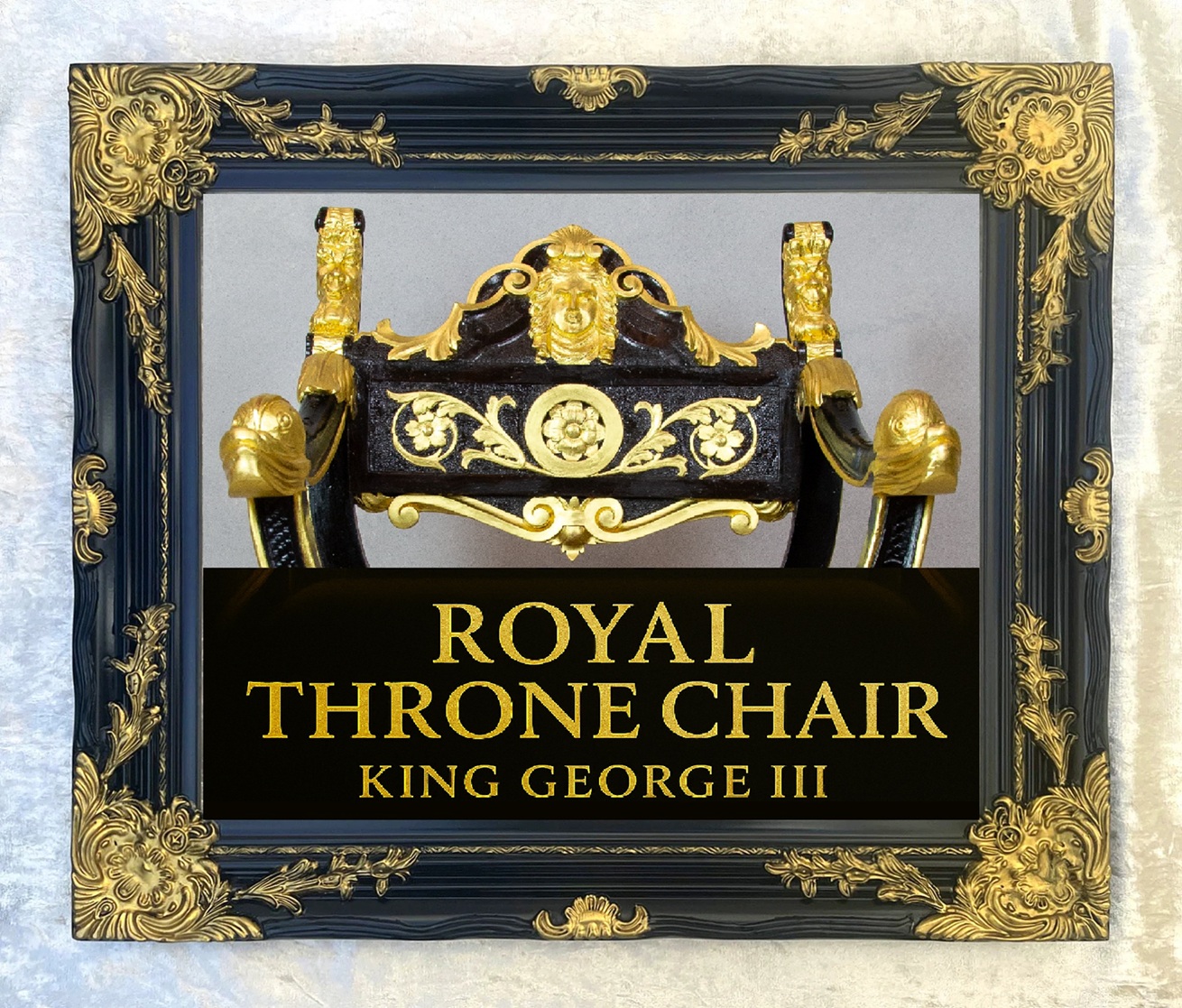Chair Provenance
List of Provenance
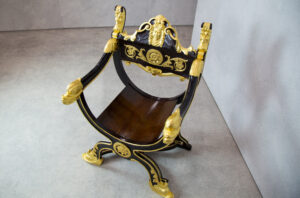
1. Only 18th century chair known to exist with King George III’s face carved on it.
2. Christmas day 1788, King George III was presented with a new iron chair by his doctors to restrain him as treatment for his “Madness” which the king called “my new throne chair” presumably as the king broke his previous wooden throne chair?
3. Purchased from a furniture restorer in 2006 in Guildford Surrey, who acquired it from a local Guilford Auction house in pieces in a box in the 1980s (30 miles away from Kew gardens where King George III lived).
4. Royal Serpents/Dolphins carved on the arms represent royalty, the same as the one on the Queen’s Royal Barge.
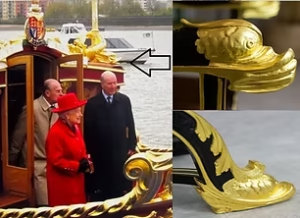
5. Lancaster rose carved on the chair (Signs of royalty)
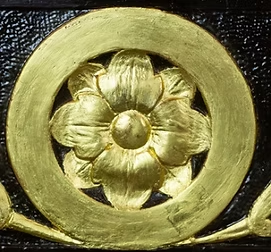
6. Tudor rose carved on the chair (Signs of royalty)
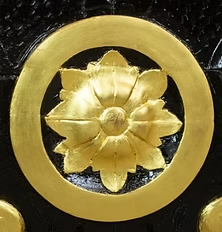
7. Wood spirits carved on the back of the chair (Old men faces with beards) . Wood spirits originated from Germany and are a ‘good luck’ fertility symbol. George I, II and III were of German descent.
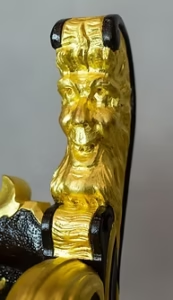
8. On the arms there are ‘Non-Slip’ grooves cut into the arm rests in batches of ‘III’ representing George III.
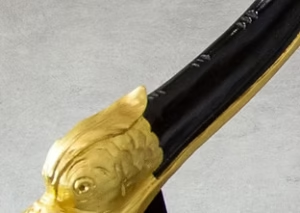
9. The chair had ‘Ebonized’ areas remaining showing it was once blackened through ebonization.
10. Partial gilt furniture was the height of fashion in the Georgian era.
11. George III had quite the obsession about chairs. He once paid £4 (£420 in today's money) for a pencil sketch of a chair.
12. The chair had tiny flecks of gold gilt remaining in the corners protected by furniture wax polish, (signs it was ‘Gold Gilt’)
13. The chair had scrape marks still visible where someone had scraped the gold gilt off to sell the scrap gold. Gold gilt in the Georgian times was made by beating real 24ct gold with a rounded hammer, it was therefore much thicker than modern gold gilt made super thin with rollers. The gold gilt removed from the chair could well have weighed up to 4 OZs; up to £4 an oz in 1761 = $14,000 of Gold Gilt in today’s money.
14. The wood was carbon dated (In Italy) and found to be over 200 years old at the time of carving (1761) - ‘only a chair made for Royalty would cabinet makers use the best oldest quality wood that would not crack’. The cost to make this chair in 1761 with the gold, expensive wood and skilled carving would have been £40-£80 = £7,000- £14,000 in today’s money. Such a chair could only be made for Royalty- As it has King George III’s face carved on it we must assume it was made for him?
15. Such a chair with royal symbols carved and ‘gold Gilt’ would only have been made for Royalty, this is not a chair made for common people it’s far too bespoke.
16. Royalty has always used the curule chair, sella curulis, which is a type of chair used in ancient Rome by dignitaries, the highest government dignitaries. Kings and Queens of England have used such chairs as investiture or throne chairs, or in the House of Parliament or House of Lords.
17. King George IV commissioned a Partial Gilt Table to be made with 4 carved heads very similar in style to this George III’s chair. The table is in the ‘Centre Room’ Buckingham Palace (the room that is behind the balcony).
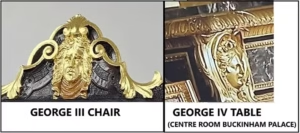
18. George III was known to climb the stairs of his 5-storey pagoda at Kew gardens palace every day, his diet was high protein, he was very strong, strong enough to break free from being strapped to a chair and break the chair in one of his anger rages.
19. The only way a Royal chair could have left a Royal Palace (Kew Garden Palace) if it was broken in pieces, given to a member of staff most likely for firewood.
20. The Gold Coronation carriage made for George III’s coronation would have come with a chair, such a chair would have been held by the footmen on top of the carriage – these chairs would not be upholstered due to being exposed to UK wet weather – This chair has no upholstery marks – this implies it was designed for outside use.
21. The chair has wide ‘Royal Serpents/Dolphin feet this suggests it was designed for outside use (grass) or uneven surfaces flagstones or wooden floorboards without carpets. Was this a carriage chair or chair for the Pagoda or a chair for outside when the king was gardening (his nick name was “farmer George” because he like to grow his own vegetables)?
22. During a visit to Kew Gardens, a statue of young boy carrying a dolphin in a fountain in the extensive gardens, even flower pots had the Tudor Rose on it. Cutlery and dining utensils all had dolphin heads.
23. Walnut is correct for the period 18th centuries. Walnut wood is a good wood for outside it can handle being wet, whereas mahogany was used for inside furniture.
